
Services
The services offered at the User±Network Interface (UNI) of GSM are patterned after the
services offered by the Integrated Services Digital Network (ISDN) [7] for ®xed terminals
tied to telephone lines. GSM services are therefore divided just like ISDN services into
three categories: bearer services,teleservices, and supplementary services. A bearer
service offers the basic technical capability for the transmission of binary data; i.e. it offers
the data transfer between end terminals at reference points R or S of the Reference Model
(Figures 4.1 and 9.1). Such bearer services are made use of by the teleservices for the
transfer of data with higher-level protocols.
Notice that bearer and teleservices both require special measures not only at the air inter-
face, but also inside the PLMN, which must offer a matching ®xed-net infrastructure and
special Interworking Functions (IWFs). Especially at the level of bearer services, the IWF
must provide a mapping of GSM PLMN services within their respective service charac-
teristics onto corresponding bearer services and characteristics of the other networks, such
as PSTN and ISDN. Teleservices are end-to-end services, for which there is usually no
translation in the IWF. But they do use bearer services, which again need IWF functions.
Bearer and teleservices are carried under the umbrella term telecommunication services.
The simultaneous use of two telecommunication services is precluded, except for the case
of Short Message Services (SMS), which can at least be received during the use of another
telecommunication service. Supplementary services are complementing the control and
modi®cation of extended services and are only usable in connection with a telecommuni-
cation service.
4
Figure 4.1: Bearer and teleservices
GSM Switching, Services and Protocols: Second Edition. Jo
Èrg Eberspa
Ècher,
Hans-Jo
Èrg Vo
Ègel and Christian Bettstetter
Copyright q2001 John Wiley & Sons Ltd
Print ISBN 0-471-49903-X Online ISBN 0-470-84174-5

For telecommunication services, the GSM standard includes agreements of target times for
their market introduction. This fact is especially important, since GSM is an international
standard which aims at worldwide compatibility of mobile stations and networks. Accord-
ingly, only a minimum of services has been de®ned, which must be offered by the opera-
tors at various time phases. For this purpose, the services are divided into the categories
essential (E) and additional (A). Group E must be implemented at the given date by all
network operators, whereas the decision about the time of introduction of Group A
services is left to the operators. Table 4.1 gives a rough overview over the implementation
and introduction phases. The most important services to be implemented and introduced
with their respective introduction dates are described brie¯y in the following.
4.1 Bearer Services
The basic services of a GSM network are the foundation for data transmission, i.e. a basic
service provides the fundamental technical facilities at the end terminal interface (refer-
ence point R) to transport user payloads. The basic services are called transport services [7]
or bearer services in ISDN ± and therefore in GSM, too. The GSM bearer services offer
asynchronous or synchronous data transport capabilities with circuit-switched or packet-
switched data rates of 300±9600 bit/s, with a 13 kbit/s bearer service for voice.
Bearer services carry only the coding- and application-independent information transport
between the user±network interfaces (Figure 4.1); they represent the services of Layers 1,
2, and 3 of the OSI Reference Model. The operators of the Terminal Equipment (TE) can
use these services and employ arbitrary higher-level protocols, but they are responsible for
the compatibility of the protocols used in the terminal equipment, quite in contrast to
teleservices, where the protocols in the terminal equipment are also standardized [7].
An overview of the most important bearer services is given in Table 4.2. Each bearer
service has its own number, e.g. BS26 is the bearer service for circuit-switched asynchro-
nous data transfer at 9600 bit/s.
Besides the asynchronous and synchronous circuit-switched data services (BS21±BS34),
packet-switched data services are also provided. These packet services are realized either
as asynchronous access to a Packet Assembler/Disassembler (PAD), BS41±BS46, or as
direct synchronous Packet Access, BS51±BS53.
The bearer services for GSM data transfer are offered in two fundamentally different
modes (Table 4.2): transparent (T) and nontransparent (NT). In the transparent mode,
4 Services
48
Table 4.1: Phases of implementation and introduction
Class Introduction Services
E1 1991 Basic operation consisting of telephone services and
some appropriate supplementary services
E2 1994 Extended operation with telephone services, ®rst non-
speech services (e.g. BS26) and an extended range of
supplementary services
E3 1996 Enhanced service range with even more
telecommunication and supplementary services

there is a circuit-switched connection between the mobile terminal (TE) and the inter-
working module in the MSC, from where the connection to other networks is handled. This
connection is protected by Forward Error Correction (FEC). The most important common
characteristics for all transparent services are constant bit rate, constant transport delay,
and residual bit error ratio dependent on the current channel conditions. The nontranspar-
ent mode activates a special Layer 2 protocol for the additional protection of the data
transfer, the Radio Link Protocol (RLP) which is specially adapted to the GSM radio
channel. This protocol terminates in the mobile station and in the MSC. It uses ARQ
procedures to request retransmission of blocks with residual errors which could not be
corrected by forward error correction.
This gives a much more signi®cant reduction in the residual error rate. In essence an error-
free information transport is achieved, hence it is approximately independent of the
4.1 Bearer Services 49
Table 4.2: GSM bearer services (excerpt)
a
Service Structure BS
no.
Bit rates
(in bit/s)
Mode Transmission
Data Asynch 21 300 T or NT UDI or 3.1 kHz
22 1200 T or NT UDI or 3.1 kHz
23 1200/75 T or NT UDI or 3.1 kHz
24 2400 T or NT UDI or 3.1 kHz
25 4800 T or NT UDI or 3.1 kHz
26 9600 T or NT UDI or 3.1 kHz
Data Synch 31 1200 T UDI or 3.1 kHz
32 2400 T or NT UDI or 3.1 kHz
33 4800 T or NT UDI or 3.1 kHz
34 9600 T or NT UDI or 3.1 kHz
PAD Asynch 41 300 T or NT UDI
42 1200 T or NT UDI
43 1200/75 T or NT UDI
44 2400 T or NT UDI
45 4800 T or NT UDI
46 9600 T or NT UDI
Packet Synch 51 2400 NT UDI
52 4800 NT UDI
53 9600 NT UDI
Altern. speech/data 61 13000 or 9600
Speech followed by data 81 13000 or 9600
a
T/NT, transparent/non-transparent; UDI, unrestricted digital information; PAD, packet assembler/disas-
sembler; asynch/synch, asynchronous/synchronous

momentary channel conditions. However, with changing error behavior of the radio chan-
nel, the frequency of block repetitions also varies, and thus the average transfer delay and
the net bit rate of the data service vary too. Activation of the nontransparent data service is
especially interesting for rapidly moving mobile stations or for cases of bad radio condi-
tions, where high fading rates and deep fading/shadow holes occur. In such situations, a
meaningful transport of user data with transparent mode can become impossible. At the
expense of a net data rate decrease, the nontransparent mode then still allows a reliable
data transport.
The GSM bearer services 21±53 are further categorized into Unrestricted Digital Informa-
tion (UDI) and 3.1 kHz (Table 4.2). The services differ mainly in the way in which they are
handled outside of the PLMN, i.e. the kind of interworking function that needs to be
activated. The UDI service category corresponds to the UDI of ISDN and supplies a
channel for the unrestricted transfer of digital information. The data transfer is unrestricted
in the sense that no bit patterns are reserved or explicitly excluded from transmission. The
3.1 kHz category is used to activate in the MSC an interworking function for 3.1 kHz audio
and to select a modem. Within the GSM PLMN (from user-network access to the inter-
working function), the data are still transferred as UDI. The designation ``3.1 kHz'' rather
refers to the fact that the transfer outside of the PLMN uses a service ``3.1 kHz Audio.''
This service is offered by conventional PSTN as well as by ISDN networks. For transfer
with this service, the data has to be converted in the IWF of the MSC with a modem to an
audio signal with a bandwidth of 3.1 kHz.
Further important GSM bearer services contain voice (telephone) service (BS61 to BS81),
which can be (multiple times) changed during a call at the request of the user to a data
service (alternate speech/data). Another alternative is that the user at ®rst establishes a
voice connection and then changes to a data connection, which cannot be changed back to
voice (speech followed by data).
4.2 Teleservices
On top of the bearer services, which can be used by themselves, a number of teleservices
have been de®ned. The most important categories are (Table 4.3) speech, SMS, access to
Message Handling Systems (MHSs) and to videotext, teletext, and facsimile transfer.
4.2.1 Voice
Voice services had to be implemented by each operator in the start-up phase (E1) by 1991.
In this category, two teleservices were distinguished: regular telephone service (TS11) and
emergency service (TS12). For transmission of the digitally coded speech signals, both
services use a bidirectional, symmetric, full-duplex point-to-point connection, which is set
up on user demand. The sole difference between TS11 and TS12 teleservices is that regular
service requires an international IWF, whereas the emergency service stays within the
boundaries of a national network.
4 Services
50

4.2.2 Fax Transmission
As teleservice for the second implementation phase (E2), implementation of transparent
fax service (TS61) for Group 3 fax was planned. The fax service is called transparent
because it uses a transparent bearer service for the transmission of fax data. The coding and
transmission of the facsimile data uses the fax protocol according to the ITU-T recom-
mendation T30. The network operator also has the option to implement TS61 on a nontran-
sparent bearer service in order to improve the transmission quality. TS61 is transmitted
over a traf®c channel that is alternately used for voice or fax. Another optional alternative
is designated as fax transfer with automatic call acceptance (TS61). This service can be
offered by a network operator when multinumbering is used as the interworking solution.
In the case of multinumbering, a subscriber is assigned several MSISDN numbers, and a
separate interworking pro®le is stored for each of them. In this way a speci®c teleservice
can be associated with each MSISDN, the fax service being one of them. If a mobile
subscriber is called on his or her ``GSM-fax number,'' the required resources in the IWF of
the MSC as well as in the MS can be activated; whereas in the case of TS61, fax calls arrive
with the same number as voice calls (no multinumbering) and have to be switched over to
fax reception manually.
4.2 Teleservices 51
Table 4.3: GSM teleservices (excerpt)
Category TS no. Service Class
Speech 11 Telephone E1
12 Emergency call E1
Fax transmission 61 Speech and fax group 3 T E2
alternating NT A
62 Fax group 3 automatic T ±
NT ±
Short Message
Services (SMS)
21 Short message mobile terminated,
point to point
E3
22 Short message mobile originated,
point to point
A
23 Short message cell broadcast ±
MHS access 31 Access to message handling
systems
A
Videotex access 41 Videotex access pro®le 1 A
42 Videotex access pro®le 2 A
43 Videotex access pro®le 3 A
Teletext
transmission
51 Teletext A




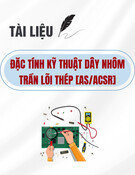


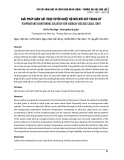



![Bài giảng Nhập môn Kỹ thuật điện [chuẩn nhất]](https://cdn.tailieu.vn/images/document/thumbnail/2025/20251208/nguyendoangiabao365@gmail.com/135x160/60591765176011.jpg)




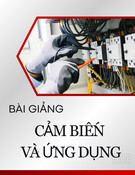

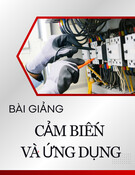
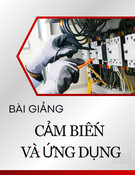


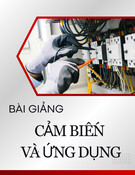
![Bài giảng Cảm biến và ứng dụng: Chương 1 - Các khái niệm và đặc trưng cơ bản [Chuẩn SEO]](https://cdn.tailieu.vn/images/document/thumbnail/2025/20251204/kimphuong1001/135x160/51101764832169.jpg)


